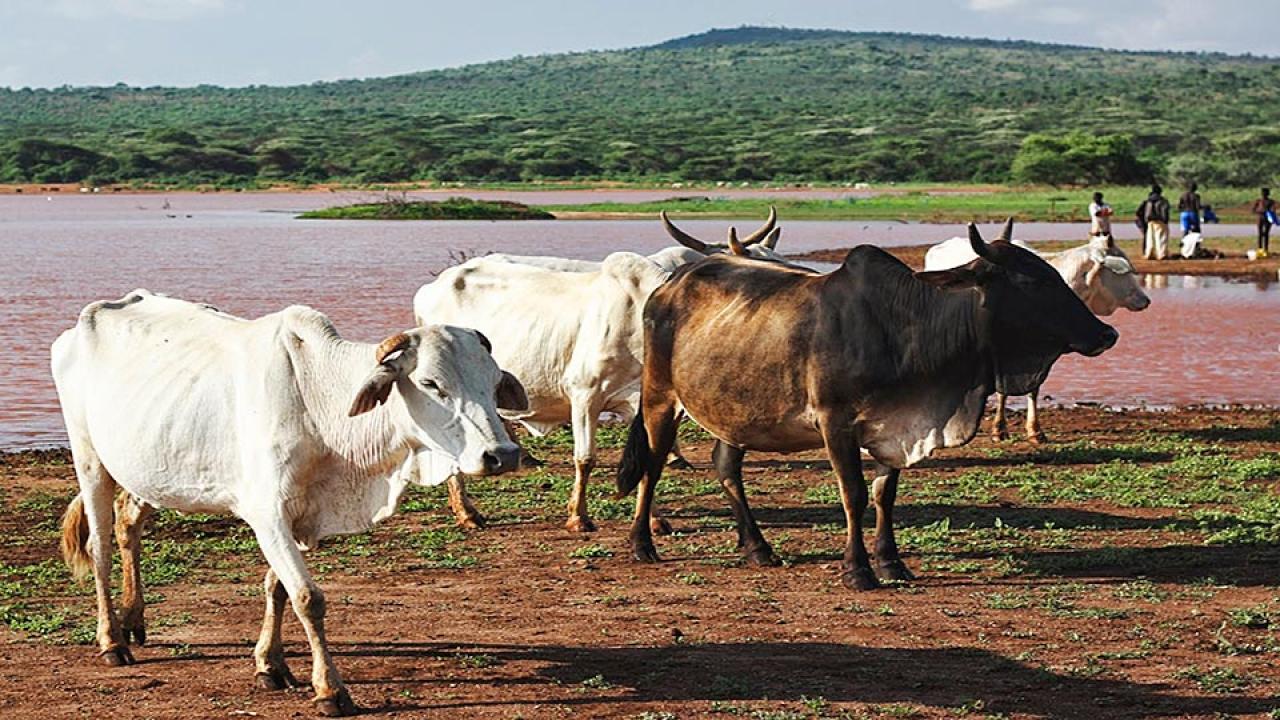A $1.4 million grant from USAID is targeting poverty in one of the poorest regions of the world. The grant funds a project, recently launched by University of California, Davis, researchers in northern Kenya, that will use a randomized, controlled trial to evaluate the impacts of combining programs that offer training, support and aid with affordable insurance to reduce chronic poverty.
Some 1.3 million Kenyans have been experiencing the impact of ongoing drought, the Kenyan government announced last year.
The new project is led by Michael Carter, a professor of agricultural and resource economics and director of the Feed the Future Innovation Lab for Assets and Market Access at UC Davis, and Andrew Mude from the International Livestock Research Institute, or ILRI, in Kenya. The researchers hope the project will help create a pathway out of poverty and reduce the need for aid, which Kenya’s government provides each year, even without drought.
“Emergency aid helps people survive, but in general it doesn’t change poverty dynamics,” Carter said. “We are looking into the synergies of helping people get out of poverty and providing a mechanism to keep them from falling back into indigence and becoming next-generation beneficiaries of emergency food aid.”
Combined interventions to keep Kenyans out of poverty
The set of interventions the project will test include: the BOMA graduation program, Kenya’s Hunger Safety Net Programme, or HSNP; and index-based livestock insurance. The BOMA graduation program teaches hard and soft skills, followed by asset transfers to start a business. The HSNP transfer program is one of five cash-transfer programs under Kenya’s national Safety Nets Programme.
Index insurance is a lower-cost alternative to traditional insurance that helps protect smallholder farmers and pastoralists from drought or extreme weather events that typically lead to deeper poverty. Index insurance is different than traditional insurance because rather than basing payouts on verified losses, it estimates losses based on an index of factors that can be measured and monitored externally, like rainfall or vegetation.
Index insurance is already changing lives in Kenya
On Feb. 20 the government of Kenya announced that an index insurance product, based on work by Carter, Mude and Cornell University’s Christopher Barrett, will trigger more than $2.1 million in payouts for pastoralists stricken by drought through the Kenya Livestock Insurance Program, or KLIP. The program has based its payouts for livestock losses on measures of vegetation forage taken by satellite at the end of the dry season.
“This insurance program is not just an effective component of our national drought relief effort. It’s also a way to ensure that pastoralists can continue to thrive and contribute to our collective future as a nation,” said Willy Bett, cabinet secretary for Kenya’s Ministry of Agriculture, Livestock and Fisheries, in a press release.
This round of payouts is based on a livestock-protection model that takes early- and mid-season measurements to time payouts that will help keep livestock alive. The government of Kenya estimates that these payments to more than 12,000 pastoral households will directly reach more than 100,000 Kenyans.
“We always felt it would be a game changer if you could issue the payments earlier,” Carter said.
Carter’s 2011 paper with Barrett, “Designing Index-based Livestock Insurance for Managing Asset Risk in Northern Kenya,” established the contract design and underlying index to predict livestock mortality that underpins KLIP. At the time, said Carter, payments to protect assets didn’t seem feasible but, since then, agricultural markets in Kenya have developed so that farmers today can now use those payments to buy forage for their livestock when there is none — or not enough — on the ground.
Finding affordable solutions to poverty
KLIP, launched in 2015, targets six counties that are currently experiencing one of the worst droughts to hit the Horn of Africa in a quarter century. Between 2008 and 2011, livestock losses caused by drought in Kenya accounted for 70 percent of the $12.1 billion in damages. The reach of KLIP is limited, however, because the Kenyan government pays the majority of premiums for the pastoralists it covers.
“The KLIP program is actually buying the entire package for the vulnerable people,” said Carter. “One of our questions with this new project is how to have the largest impact on the well-being of poor people in this country for a given constrained budget.”
The project, “Can Asset Transfer & Asset Protection Policies Alter Poverty Dynamics in Northern Kenya? A Randomized Evaluation of an Integrated Graduation and Contingent Social Protection Program,” will run from February 2017 through September 2021. It is part of the USAID Associate Award that launched the Global Action Network project, which seeks to identify and fill gaps in research on index insurance for global development.
Feed the Future Innovation Lab for Assets and Market Access
The mission of the Feed the Future Innovation Lab for Assets and Market Access, or AMA Innovation Lab, is to conduct and support research on policies and programs designed to help poor and smallholder farmers worldwide to manage risk, adopt productive technologies and take an active part in economic growth.
It is one of 24 Feed the Future Innovation Labs across the United States funded by USAID’s Food Security Bureau to support the U.S. government’s global hunger and food security initiative.
Media Resources
Alex Russell, Feed the Future Innovation Lab for Assets and Market Access, 530-752-4798, parussell@ucdavis.edu
Tara Steinmetz, Feed the Future Innovation Lab for Assets and Market Access, 530-752-7252, tlsteinmetz@ucdavis.edu
Pat Bailey, UC Davis News and Media Relations, 530-219-9640, pjbailey@ucdavis.edu
